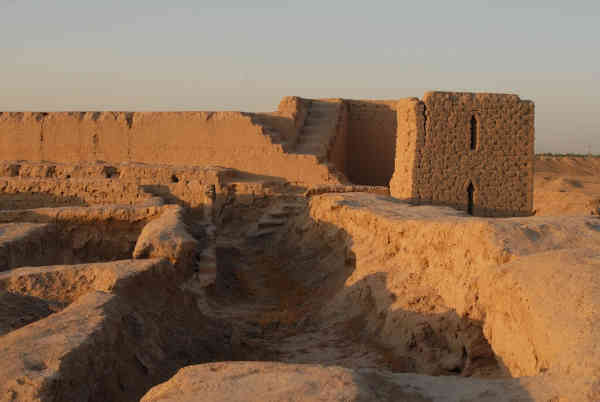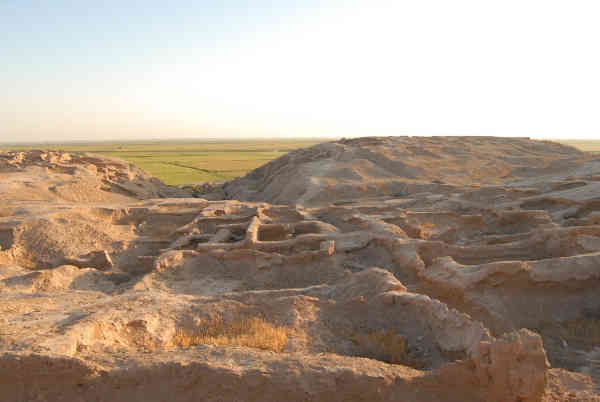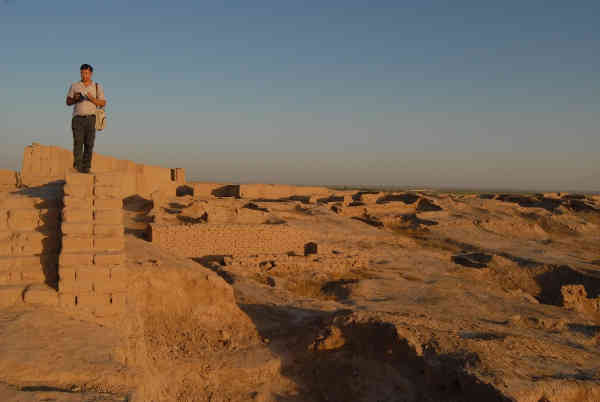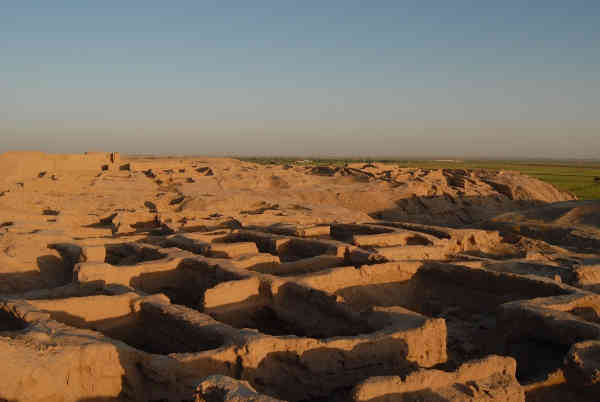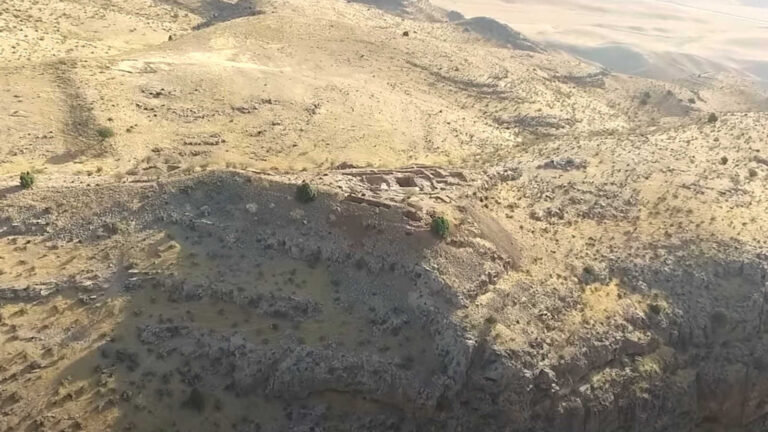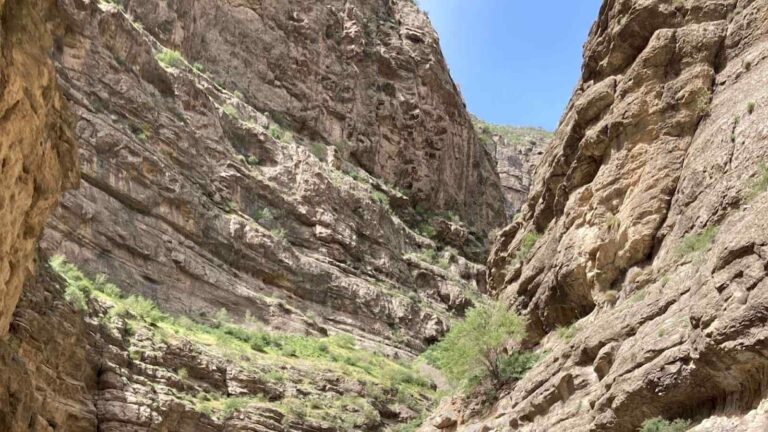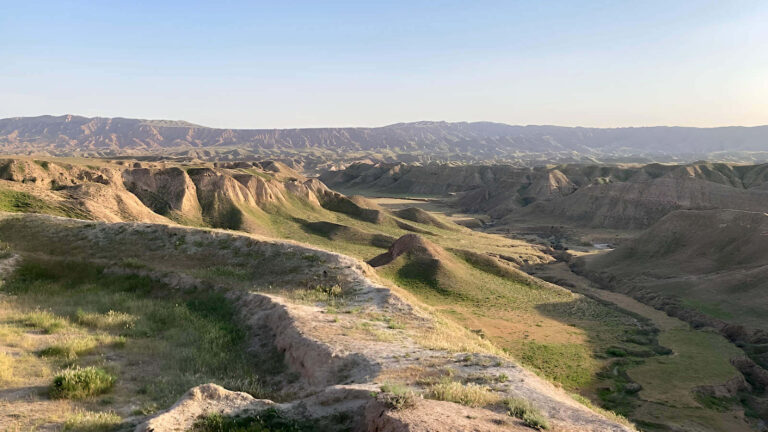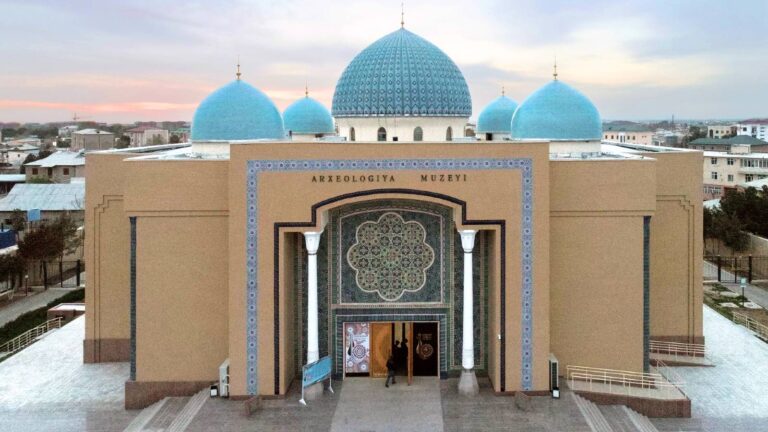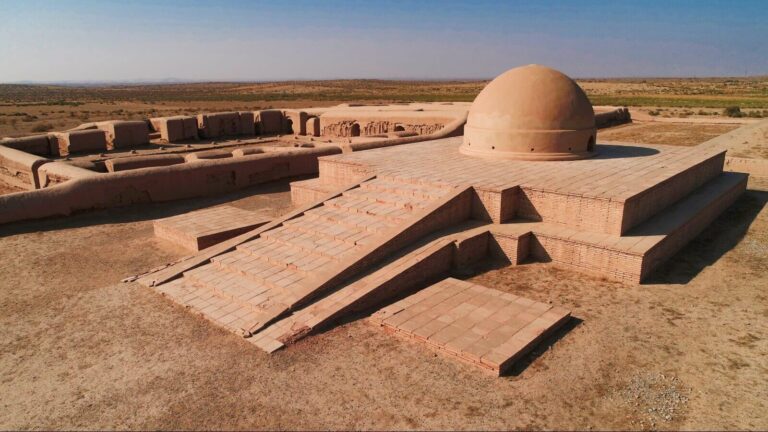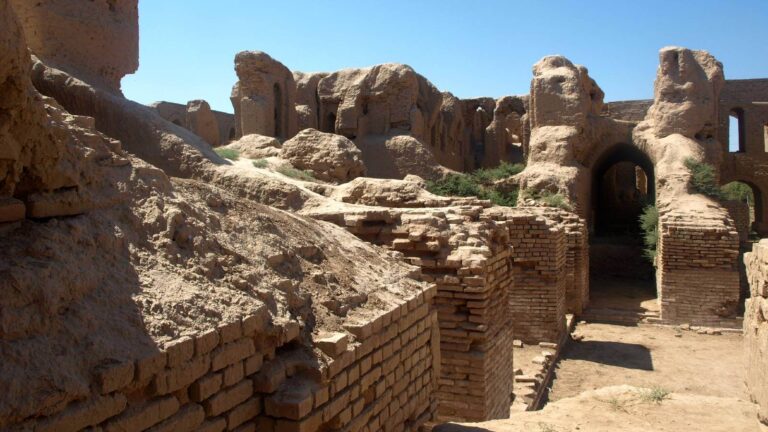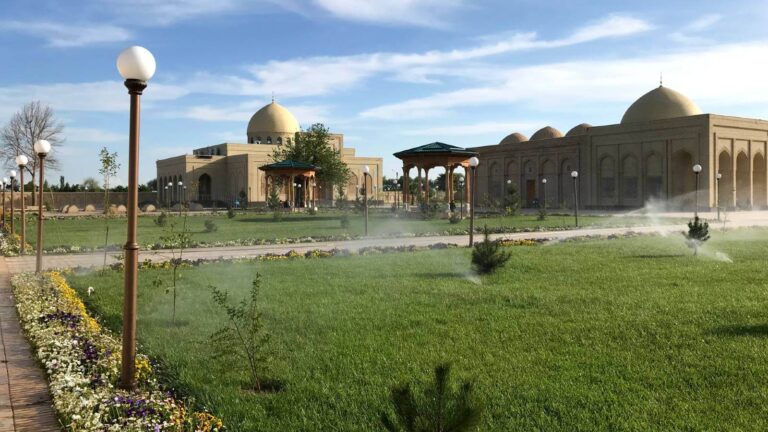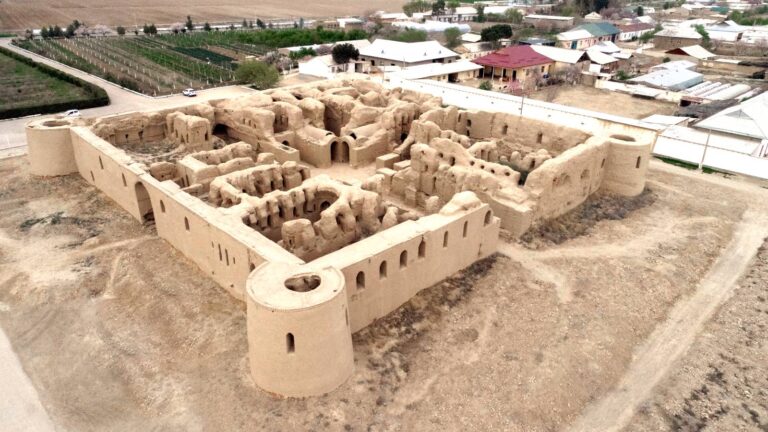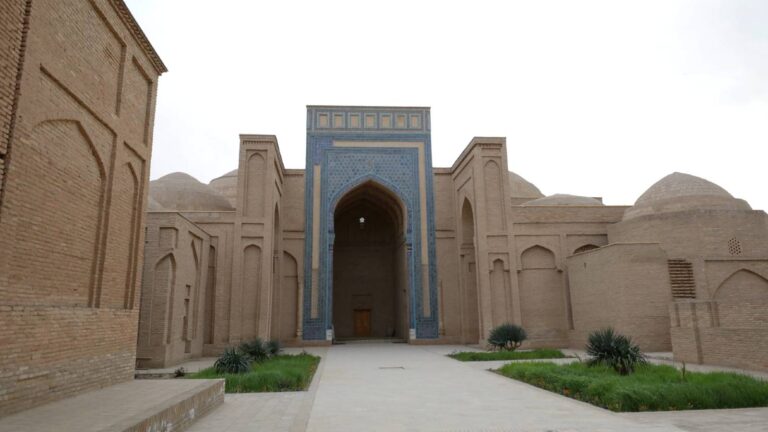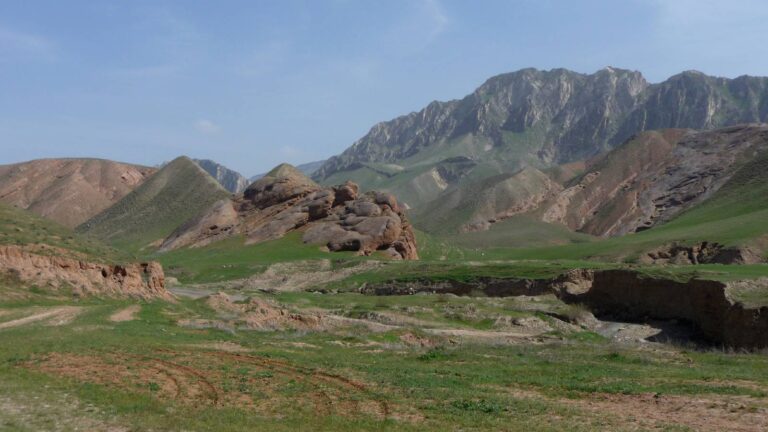Getting There
Fly or take the train to Termez and then hire a car and driver to reach Kampir Teppa.
What to Expect
Kampir Teppa has been comprehensively excavated but not restored. You can wander carefully through the city’s ruins; the walls and streets are clearly visible. Important finds are in museums in Termez and Tashkent.
History
Described as the Pompeii of Central Asia, Kampir Teppa is an archaeological site close to the Amu Darya in southern Uzbekistan. It was discovered in 1972 by Edvard Rtveladze, who spent nearly 50 years collecting evidence to prove convincingly this is Alexandria on the Oxus, a city built by Alexander the Great.
The city was founded in the 4th century BC and it included a citadel, a harbour, fortifications, and residential harbour. The presence of the harbour was confusing at first, because the river has shifted course and is now only visible in the distance. New defensive walls were built when Kampir Teppa was about 200 years old, and coins discovered here were minted during the reign of the Graeco-Bactrian King Euthydemus I.
Kampir Teppa was occupied until the 2nd century AD, when it was a well-developed Kushan settlement. It was then abandoned due to lack of water.

